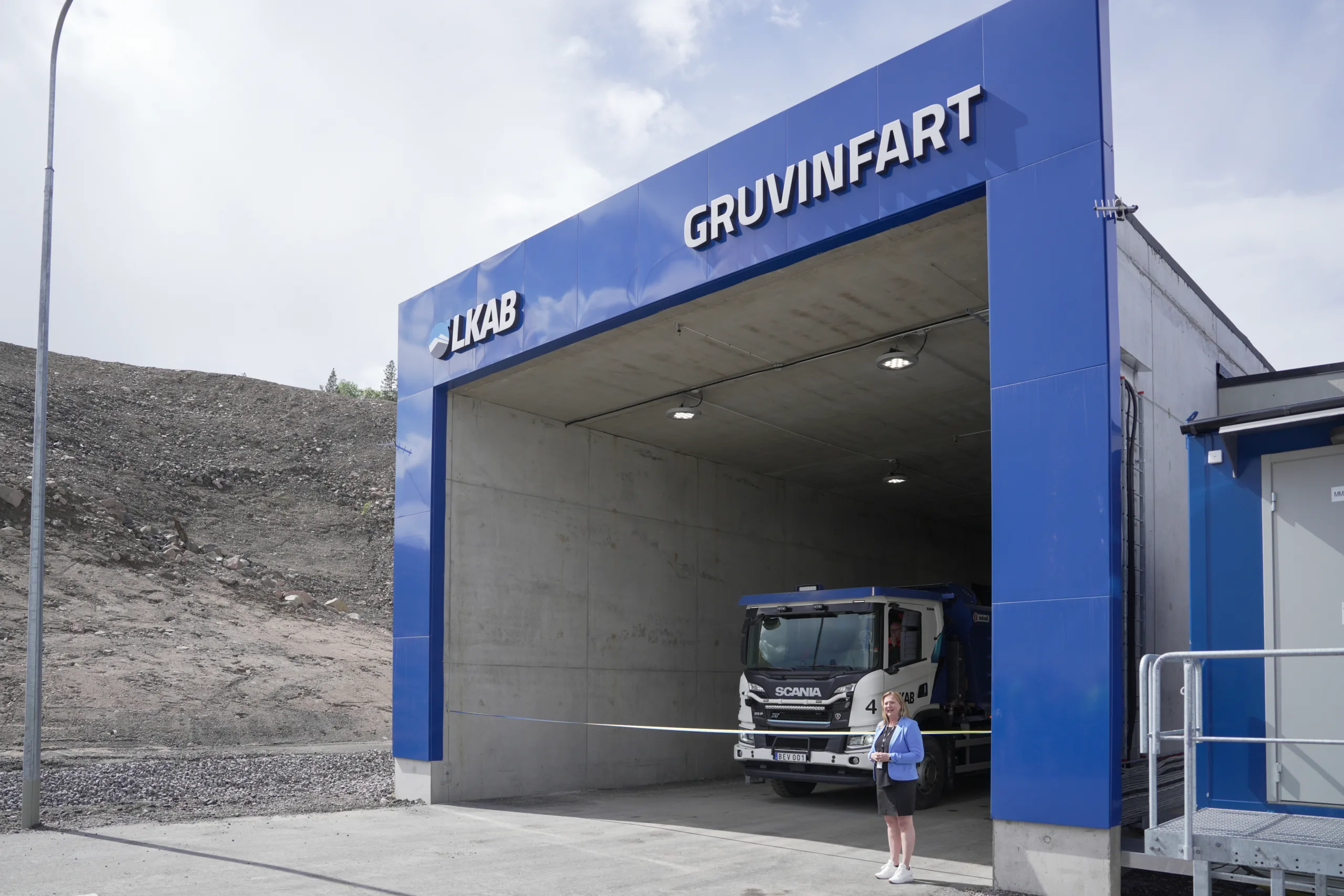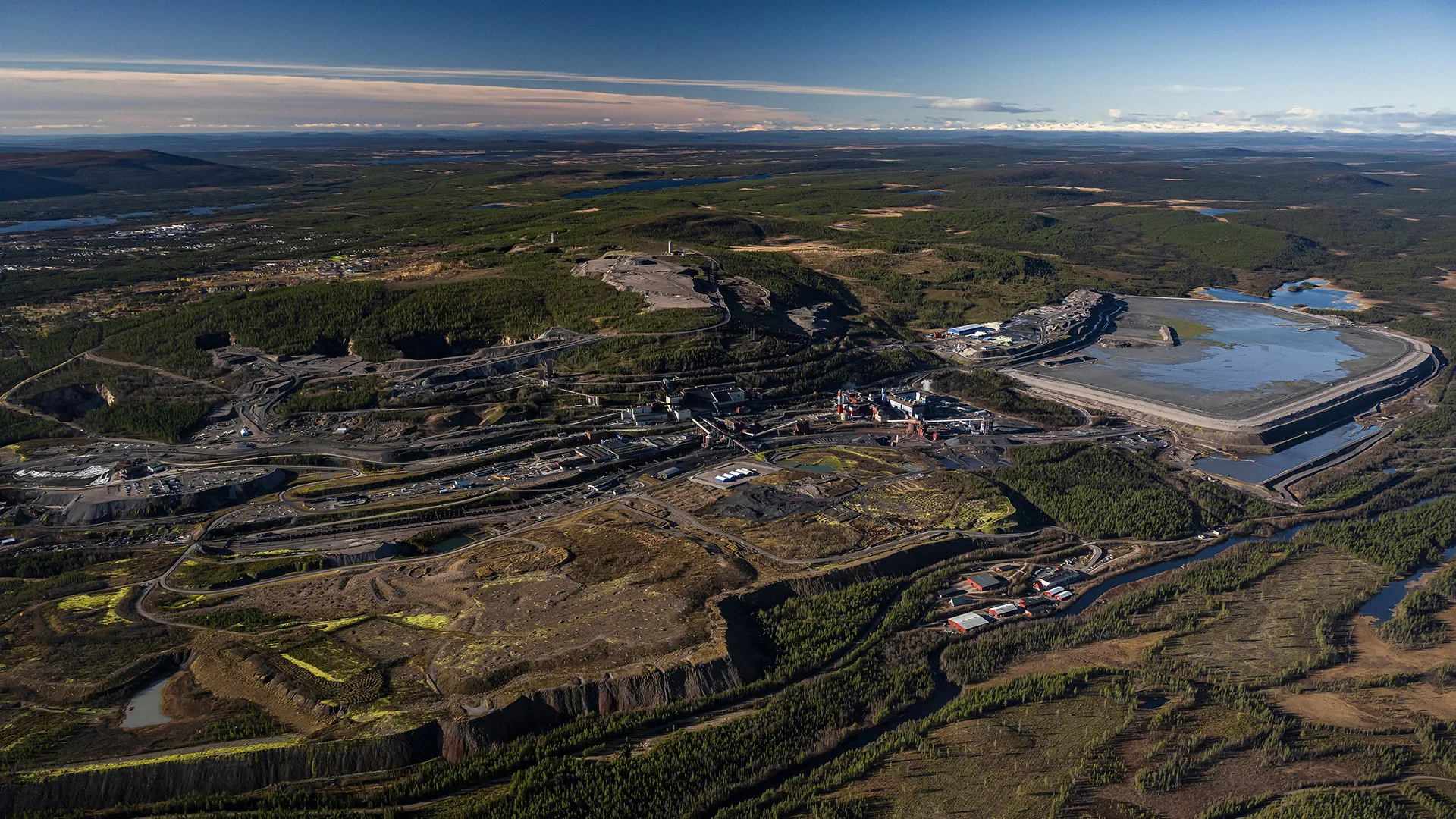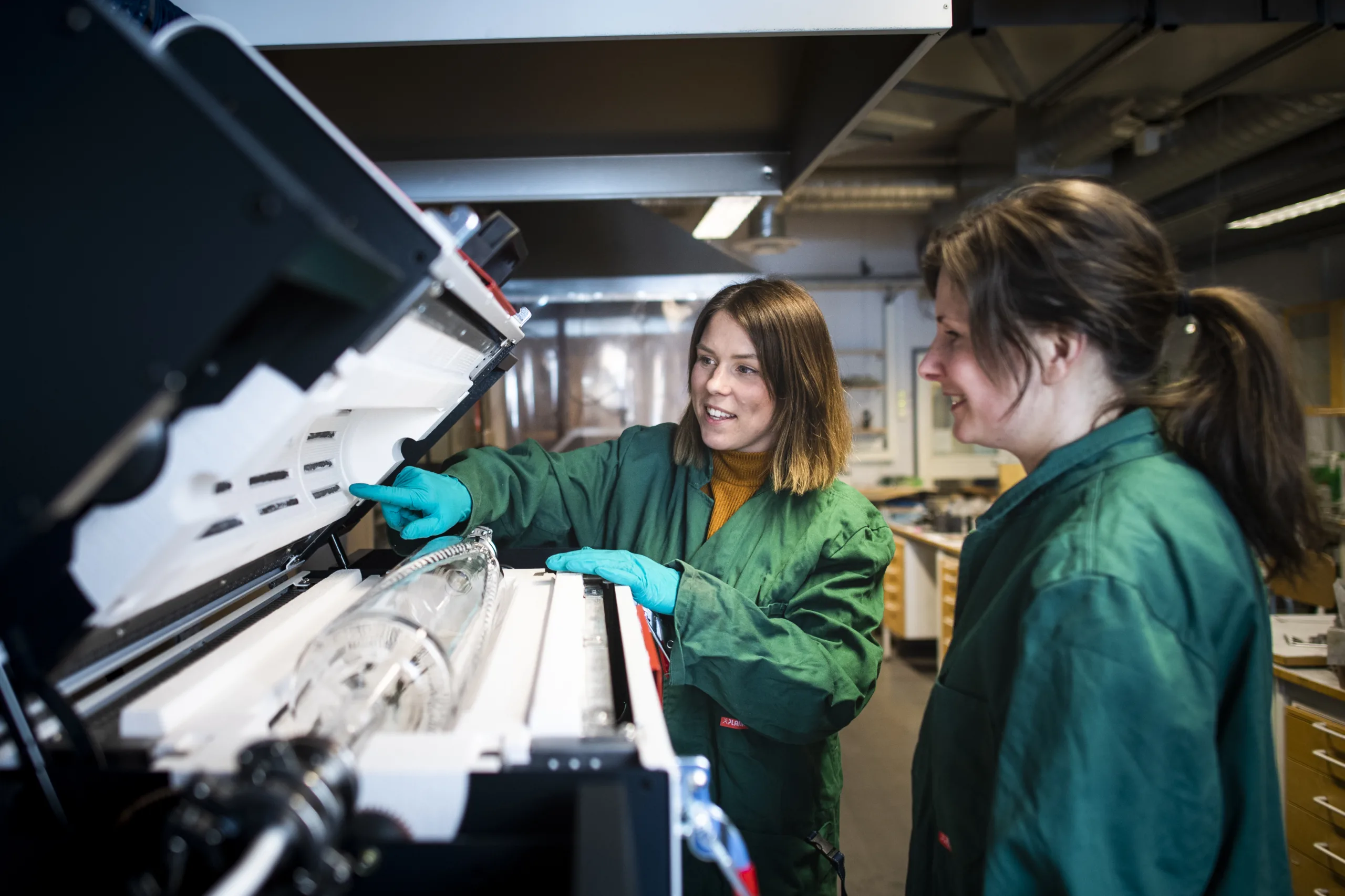Spot is breaking new ground at LKAB
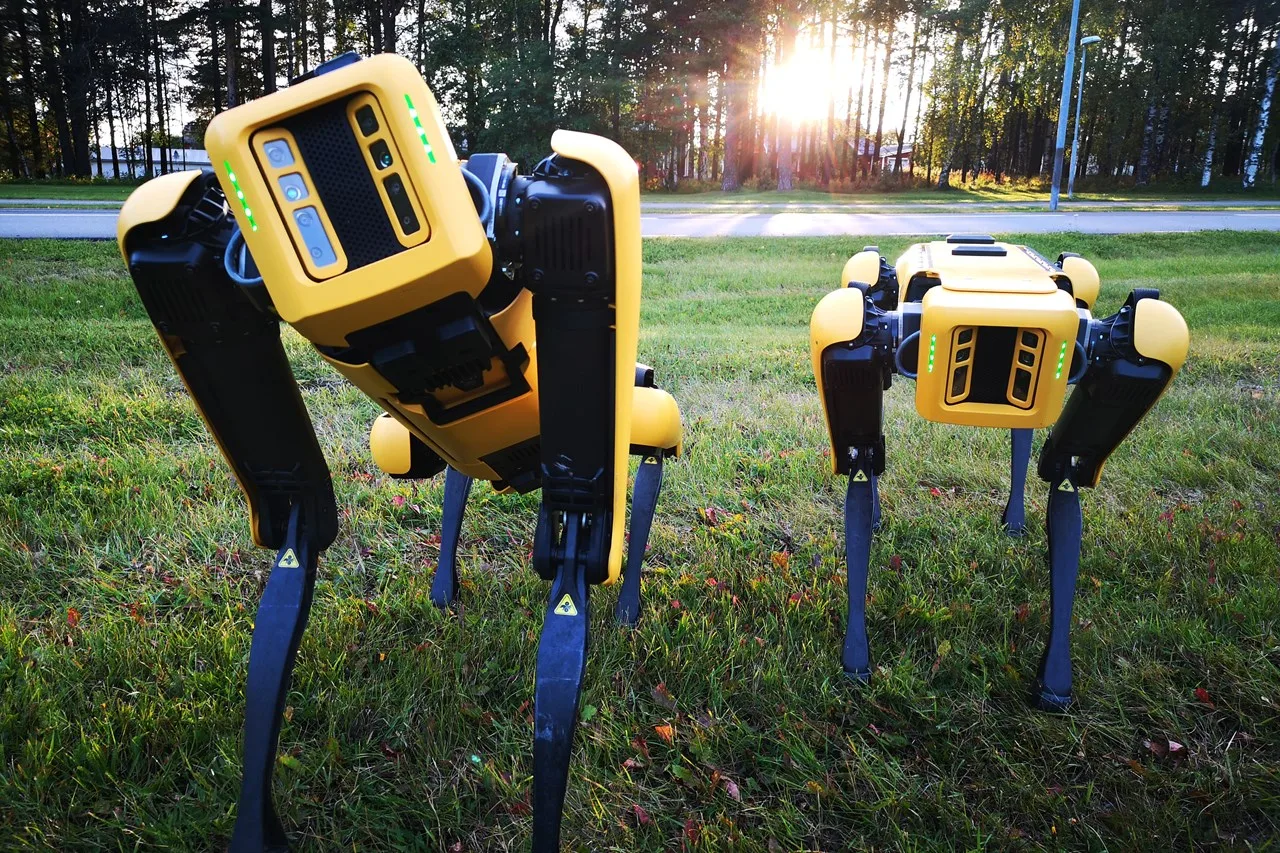
Robotic dog Spot continues to break new ground at LKAB and is being modified and developed according to LKAB's specific requirements. One of many applications is to use Spot to assist in rescue operations and other emergencies, for example, in the event of smoke emissions under ground. "The next step is to connect Spot to LKAB's network. Then, the robot can work remotely," says Nikolaos Petropoulos, senior research engineer in the department of Technology and Process Development at LKAB.
Spot has already spent several days under ground since beginning work at LKAB in September. And this robotic dog is quickly learning new tricks.”Working better and better in the terrain where it has been tested, Spot is learning more about our mine environment all the time,” says Nikolaos Petropoulos.
Since Spot is equipped with AI technology, the robot has the ability to recognize environments, adapt to the terrain and develop patterns of movement based on situations it has previously encountered. In fact, Spot can perform tasks based on the operator’s commands and find its way from point A to point B without a map reader. This means that Spot can navigate through challenging terrain, avoiding obstacles in the form of, for example, vehicles and boulders, while following an accurate compass reading.“Spot creates its own image of the terrain and reads the surroundings to optimize its route. The more the robot is trained in the mine environment, the more its ability improves,” says Nikolaos Petropoulos.
Spot is similar to a real dog in many ways. Weighing in at 32.5 kilograms, the robot is more like a Doberman than a Labrador, moving dynamically and with surprising agility over the ground surface, front paws first.“We’re collaborating with Luleå University of Technology to develop, among other things, new procedures and tasks for Spot. One example is inspection following night-time blasting. Spot could be activated at a given time to inspect the area according to a set procedure. Tasks include delivery of images and information about lingering blasting gases in the area.”
Spot represents a great leap forward in terms of engineering and development, but this new technology is above all a step in the right direction towards a safer LKAB. Spot can enter difficult-to-access and confined areas on its own, and one of many applications is to use Spot in the event of fire.“Spot can carry up to 14 kilograms of inspection equipment. This may include everything from gas detection alarms to first aid kits, oxygen cylinders, fire blankets and thermal imaging cameras.”In other words, Spot can assist emergency services, since it is able to enter difficult-to-access and smoke-filled areas on its own. “The robot is easy to manoeuvre and will be able to be used by many operators. No special experience is needed to to work with Spot, but those who have played TV games will have an advantage.”
Another application is to use Spot as a hub, a sort of carrier for equipment that can operate remotely from the hub.“We can install drones on Spot that can fly into environments independently, and then dock again when the task has been performed.”
Spot has battery capacity for 90 minutes, and this is what determines how far away from the operator the robot can travel. Charging takes about two hours, and then Spot is ready for new tasks.“We don’t know all the limitations yet and we are always investigating new possibilities,” concludes Nikolaos Petropoulos.
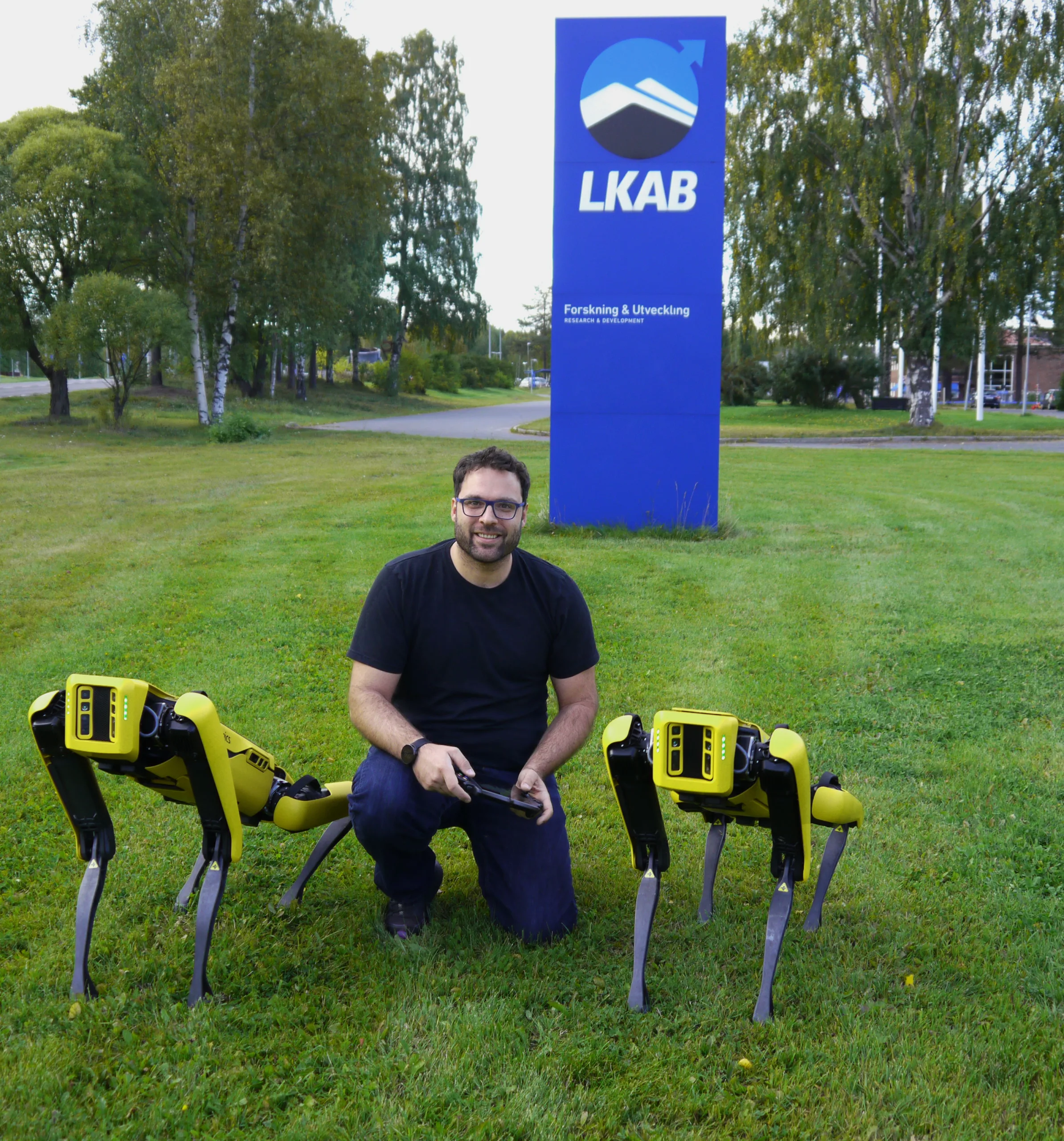
Nikolaos Petropoulos together with Spot 1 och Spot 2.

